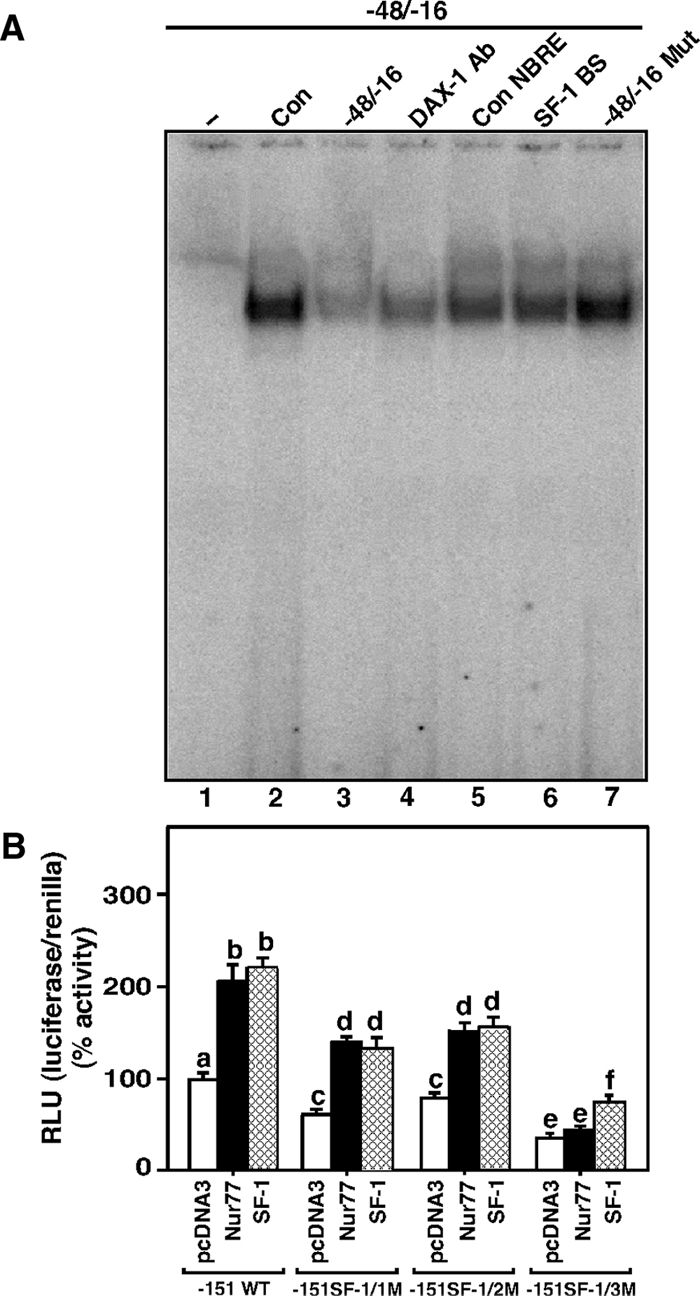Figure 9.

Assessment of Nur77 and SF-1 binding to the DAX-1 hairpin structure and roles of these factors in StAR promoter responsiveness. A, MA-10 NE (15 μg) was used to determine protein binding to the 32P-labeled DAX-1 (−48/−16 bp) motif (lanes 2–7). Binding of untreated MA-10 NE (Con, lane 2) to the labeled probe (−48/−16) was challenged with its unlabeled (−48/−16 bp) sequence (lane 3), DAX-1 Ab (lane 4), consensus NBRE (Con NBRE, lane 5), a confirmed SF-1 BS (lane 6), and with a mutant DAX-1 sequence (−48/−16 Mut, lane 7). MA-10 cells were transfected with empty vector (pcDNA3), Nur77, and SF-1 expression plasmids, within the context of one of the −151/−1 StAR reporter segments: either wild-type (−151 WT) or a reporter containing mutations in one of the SF-1 binding sites (SF-1/1M, SF-1/2M, SF-1/3M), in the presence of 15–20 ng of pRL-SV40 (B). After 48 h of transfection, cells were collected and luciferase activity in the cell lysates determined by [relative light units (RLU), luciferase/renilla] and presented in terms of percent activity. Data represent the mean ± se of four independent experiments. Letters above the bars indicate that these groups differ significantly from each other, at least at P < 0.05.
